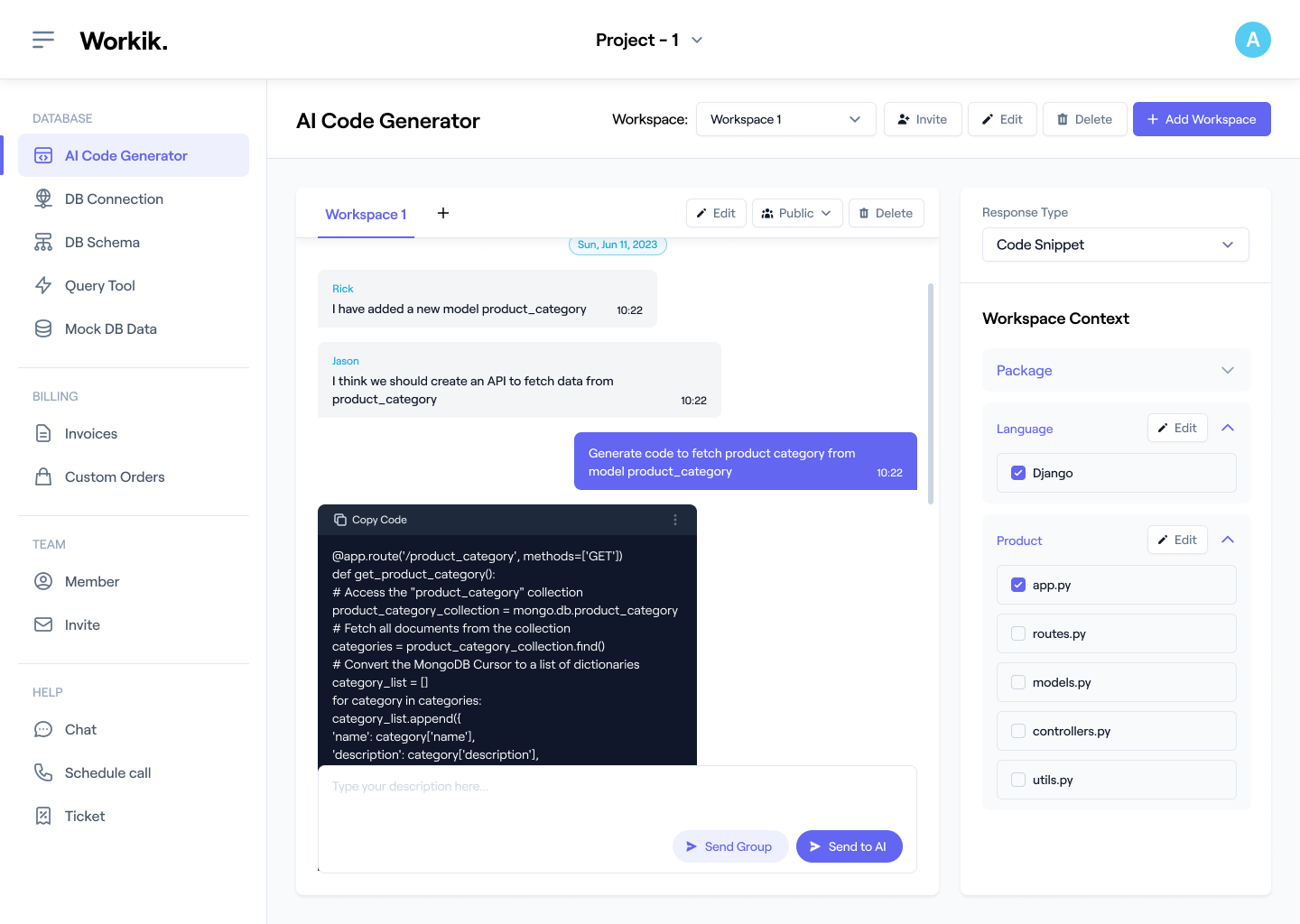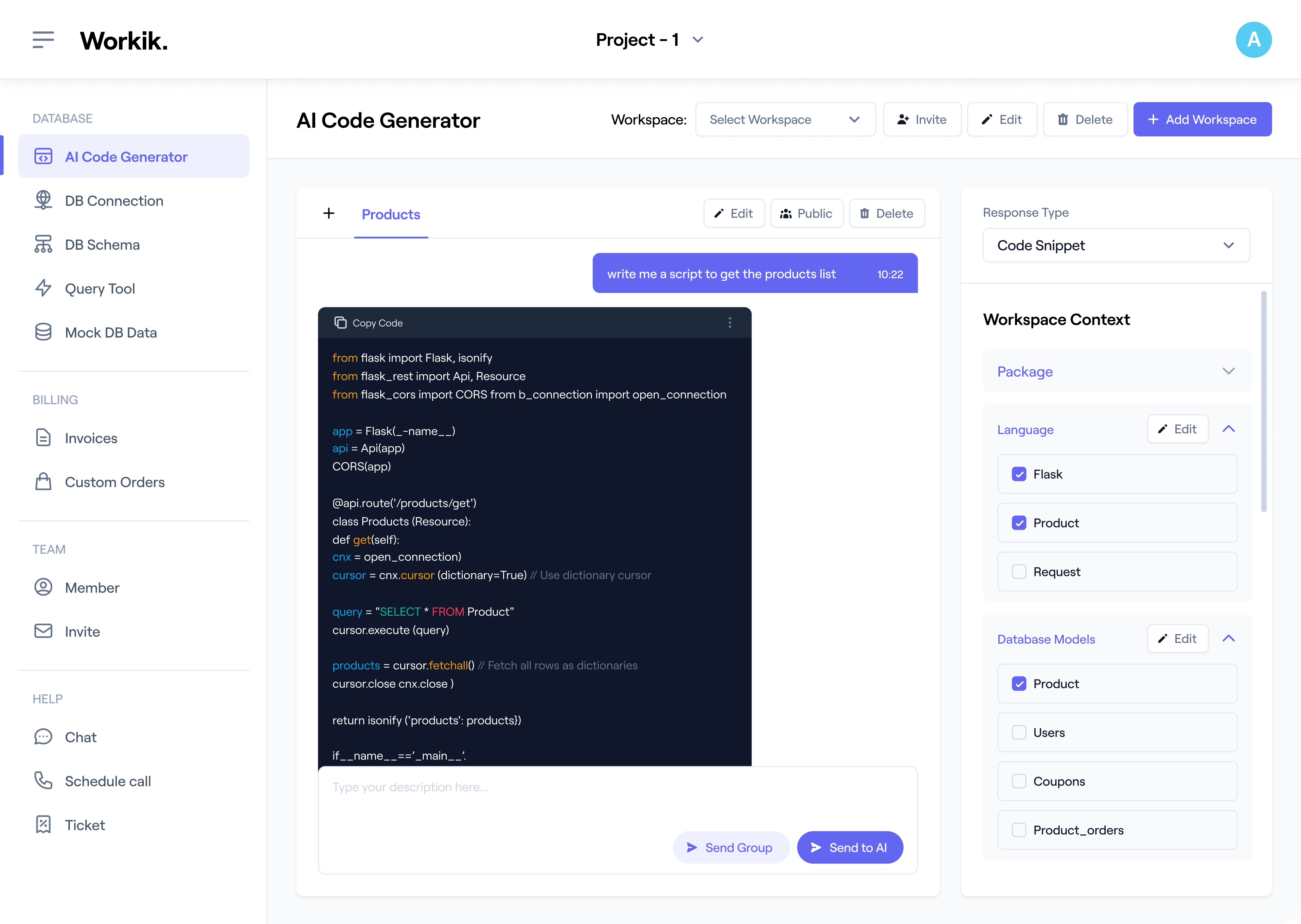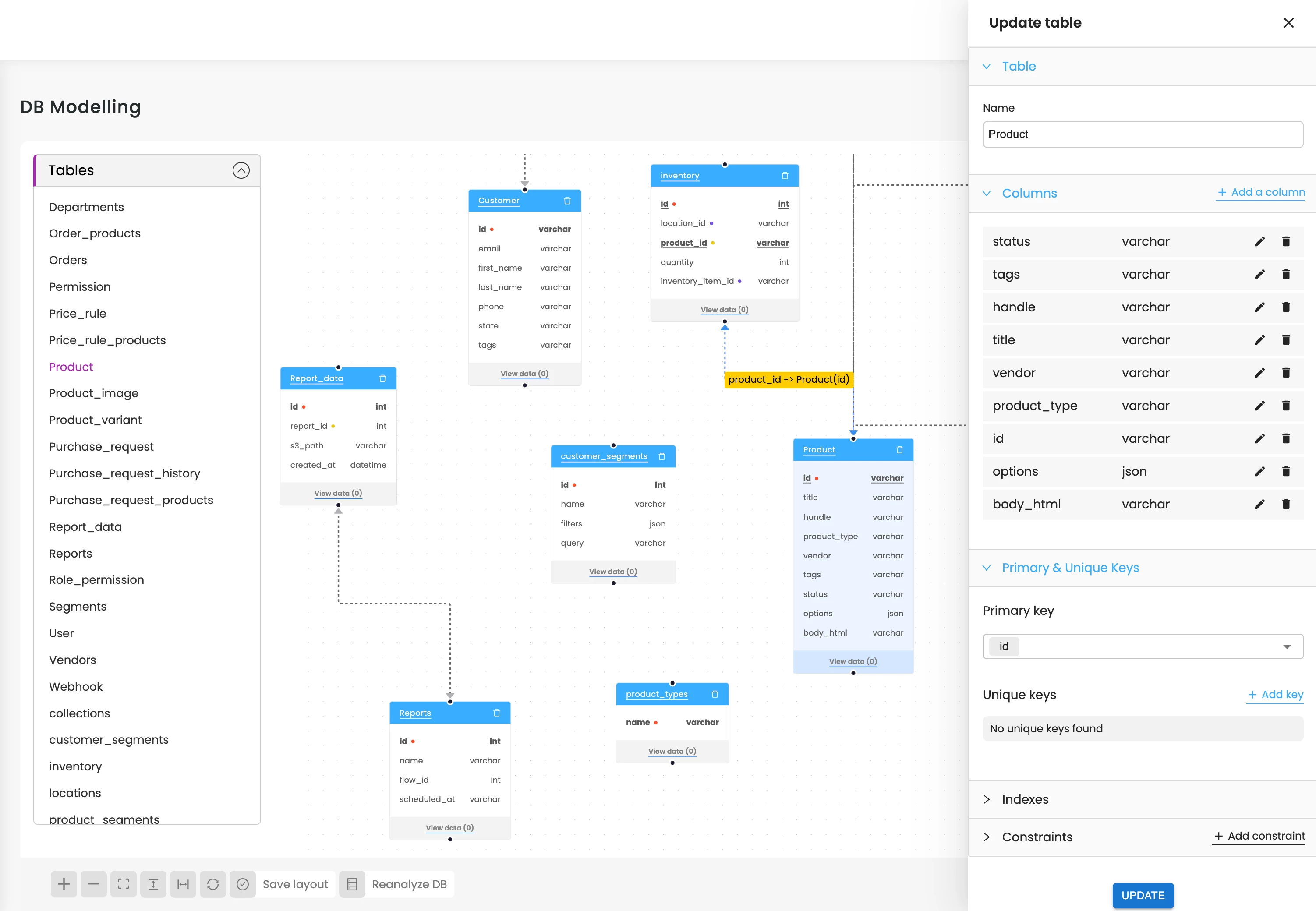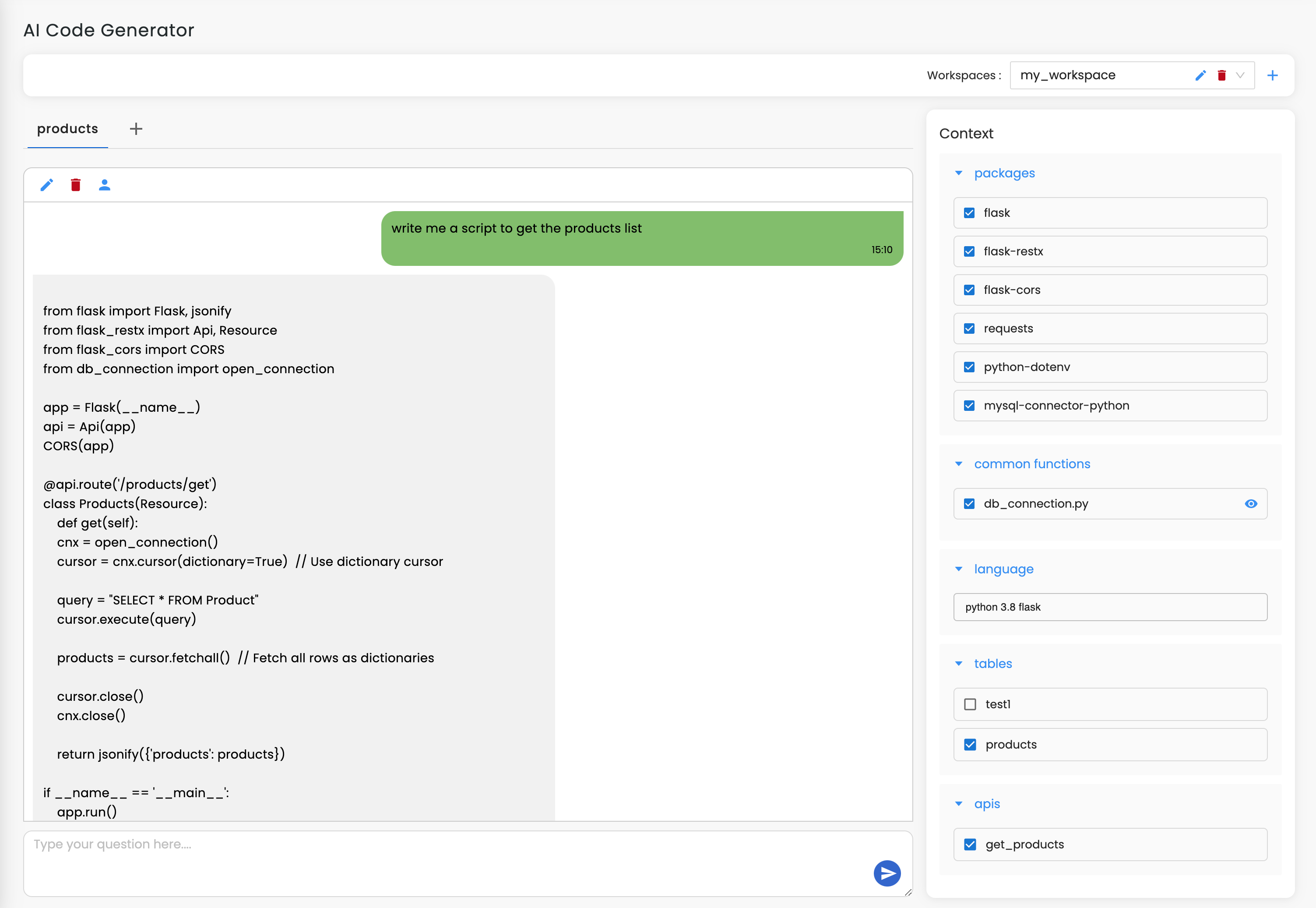
Join our community to see how developers are using Workik AI everyday.
Features

Create Razor Component
Use AI to generate reusable components with MudBlazor for optimized UI consistency.

Optimize State Management
AI enhances two-way data binding by suggesting patterns with Fluxor or Redux for complex applications.

Simplify API Integration
AI helps scaffold API services, generating robust client-side logic using Refit to streamline backend communication.

Secure Authentication Setup
Leverage AI to configure setups with IdentityServer or Azure AD for token-based access flows and enterprise scalability.
How it works
Create your Workik account in seconds and start building Blazor apps effortlessly.
Import Blazor projects from GitHub, GitLab, or Bitbucket. Define Razor components, pages, and layouts. Specify additional frameworks like Bootstrap for targeted AI assistance.
Leverage AI for Razor component creation, API integration, debugging, testing, and UI optimization. AI adapts to your Blazor project, streamlining development at every stage.
Share AI-generated insights with your team in Workik. Effortlessly manage server-side and WebAssembly configurations to deploy your Blazor web apps.


Expand
.png)
.png)
Expand


Expand


Expand


Expand


Expand


Expand


TESTIMONIALS
Real Stories, Real Results with Workik
Workik AI streamlined Blazor UI development, saving me hours on Razor components.

Emily Carter
Front-End Developer
AI effortlessly scaffolds APIs, making full-stack Blazor development faster and smoother.

Ryan Jonas
Full-Stack Developer
Workik AI simplified secure authentication setups, perfect for scaling Blazor projects.

Sophia Moore
Tech Lead
What are some popular use cases of Workik's AI-powered Blazor Code Generator?


Some popular use cases of the Blazor Code Generator include but are not limited to:
* Design interactive single-page applications (SPAs) with optimized Razor components.
* Implement dynamic data binding for real-time web applications.
* Create secure authentication and authorization flows using IdentityServer or Azure AD.
* Automate API integrations for seamless backend communication.
* Generate scalable layouts and UI components with libraries like MudBlazor.
* Streamline WebAssembly-based applications for performance-critical solutions.
What context-setting options are available in Workik’s AI for Blazor Code Generator?


Workik offers diverse context-setting options for Blazor code assistance, allowing users to:
* Define Razor pages, layouts, and reusable components.
* Integrate MudBlazor or Bootstrap for responsive design elements.
* Import Blazor projects or templates from GitHub, GitLab, or Bitbucket.
* Add API endpoints via Postman/Swagger and database schemas for complete CRUD operations.
* Specify WebAssembly or server-side Blazor configurations.
* Incorporate state management patterns like Fluxor or Redux for complex applications.
How does Workik AI simplify complex Blazor routing setups?


Workik AI handles nested layouts or conditional page rendering. For instance, it can generate route tables with parameters for multi-step forms or admin dashboards. AI also validates route definitions to prevent conflicts or missed paths.
Can Workik AI help create real-time features in Blazor apps?


Yes! Workik AI assists in building SignalR-powered real-time features like live chats, notifications, or collaborative tools. For example, AI can generate both the Razor components and the backend hub logic to enable a live user activity tracker.
Can Workik AI enhance data visualization in Blazor apps?


Definitely! AI helps integrate libraries like ChartJS and Syncfusion to generate interactive dashboards and graphs. For instance, it can help create a dynamic sales performance tracker that updates data, complete with filters and responsive resizing.
How does Workik AI support microservices architecture in Blazor?


Workik AI can generate API gateways and modular Razor components. For example, it can scaffold services for user management, notifications, and analytics, while ensuring that your app communicates efficiently with each microservice via REST or gRPC.
How does Workik assist with Progressive Web Apps (PWAs) in Blazor?


Workik AI helps in service worker setup, offline caching, and manifest generation. For instance, AI can create a Blazor-based PWA for task management, enabling offline functionality and push notifications, ensuring a seamless user experience.
Generate Code For Free

Blazor: Question and Answer
Blazor is a modern web framework by Microsoft that enables developers to build interactive web applications using C# and .NET. It supports both client-side (WebAssembly) and server-side hosting models. Blazor uses Razor syntax for building reusable UI components and integrates seamlessly with the .NET ecosystem, making it ideal for full-stack web development.
Popular frameworks and libraries used in Blazor include:
UI Frameworks:
MudBlazor, Radzen Blazor
State Management:
Fluxor, Redux
Styling:
Bootstrap, Tailwind CSS
Routing:
Blazor built-in routing, DynamicRouting
Testing:
xUnit, bUnit, Selenium
API Management:
Refit, RestSharp
Bundling Tools:
MSBuild, WebOptimizer
Popular use cases of Blazor include but are not limited to:
Web Application Development:
Build interactive single-page applications with .NET.
Enterprise Applications:
Develop scalable, secure, and maintainable enterprise solutions.
Progressive Web Apps (PWAs):
Create installable web apps with offline functionality.
Internal Tools and Dashboards:
Build real-time, data-driven internal applications.
Hybrid Apps:
Use Blazor with frameworks like MAUI for cross-platform mobile app development.
E-Commerce Platforms:
Create dynamic, component-driven e-commerce websites.
Career opportunities and technical roles available for professionals in Blazor include Full-Stack Developer, Blazor Developer, Web Application Developer, .NET Developer, UI/UX Developer, Progressive Web App Developer, and Enterprise Application Developer.
Workik AI provides comprehensive Blazor development assistance, which includes:
Code Generation:
Creates Razor components, layouts, and UI logic for responsive web apps.
Debugging:
Identifies and resolves errors in Blazor apps with AI-driven suggestions.
Optimization:
Recommends reducing component re-renders or optimizing state management.
Automation:
Simplifies repetitive tasks like routing, API integrations, and database operations.
State Management:
Assists with managing Fluxor or Redux patterns for stateful applications.
PWA Configuration:
Streamlines Progressive Web App setup with service workers and offline caching.
API Integration:
Facilitates seamless REST or GraphQL API integrations for client-side service generation.
Deployment:
Guides deployment to platforms like Azure, AWS, or custom servers for WebAssembly or server-hosted Blazor apps.
Explore more on Workik
Get in touch
Don't miss any updates of our product.
© Workik Inc. 2025 All rights reserved.

